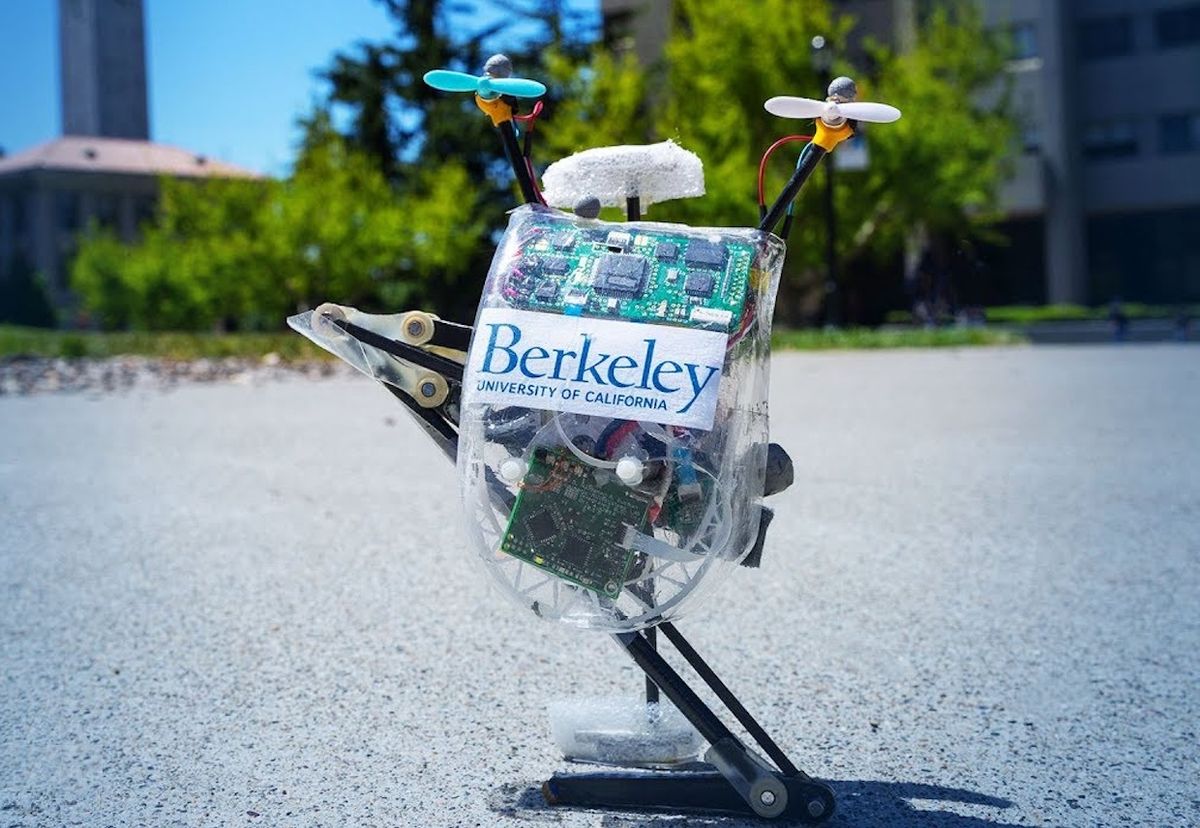UC Berkeley’s Salto has been one of our favorite robots since 2016, which makes it old-ish in robot years. While it’s kept the same “hyper-aggressive pogo-stick” concept, a series of upgrades has endowed Salto with with the ability to do increasingly more dynamic maneuvers.
The original Salto could make two jumps in a row. Thrusters added in 2017 gave the robot the control it needed to chain together multiple jumps. And late last year at IROS, an improved controller gave Salto the intelligence that it needed to make pinpoint jumps that allowed it traverse a series of vertical obstacles (and more).
The big constraint has always been that in order for Salto to keep itself upright and in one piece, it had to jump within a motion-capture environment, which limited its usefulness to (let’s be honest) not much more than a cool research project and highly effective YouTube video view generator.
Today at ICRA, UC Berkeley roboticists Justin Yim and Eric Wang (from Ron Fearing’s Biomimetic Millisystems Lab) presented the latest version of Salto, which adds the sensing and computing required to do away with the motion-capture system completely. Salto can now jump as much as you want out of the lab, and in fact completely outdoors.
Salto is not jumping autonomously—Justin is “driving” the robot, keeping it on the sidewalk and avoiding obstacles since Salto doesn’t have any onboard sensing. Jumping up onto that step was human-driven as well, and the description of the sequence of motions in the paper reminds us why taking humans out of the loop is such a good idea:
The human operator directed the robot to jump in place, and then advance in a straight line towards and onto a step 0.43 m high. The robot was then directed to hop to the right on top of the step, and then towards the left. This run lasted 19 seconds total before human error directed the robot into a bush on the left.
Oops.

The new onboard attitude estimation and hopping control system (called SHOVE, for SLIP Hopping Orientation and Velocity Estimator) is robust enough that Salto can jump continuously even on compliant surfaces like foam. It uses dead reckoning to estimate how much its position changes with each jump, and even after 300 jumps over the course of several minutes, this estimate only drifts by a meter or two (representing an error of less than 1 centimeter per jump).
However, the tricky part right now is accurately estimating the Salto’s attitude, by which we assume the researchers mean its orientation (as opposed to how “hyper-aggressive” it is). Attitude estimate errors of about 1 degree result in foot placement locations that vary by about half a meter from jump to jump, and in practice, this means that Salto can’t plan its jumps with enough precision to reliably climb stairs.
This is being worked on, though, and the researchers expect that “higher precision estimation and control can enable jumping on more finely varied surfaces like stairs, furniture, or other outcroppings” as well as “soft substrates like upholstery or natural foliage.”
The researchers tell us that Salto’s hardware is capable enough at this point that aside from potentially upgrading the motor or battery for more jumping power or run time, the focus now will be on new behaviors, although they’re toying with the idea of adding some kind of gripping foot so that Salto can launch from, and land on, tree branches (!). And as for that “pair of legs” and “arms” that Professor Ron Fearing mentions in the video, that would be quite an upgrade as well, but I’ll always have a soft spot for Salto as a bouncy little monoped.
“Drift-free Roll and Pitch Estimation for High-acceleration Hopping,” by Justin K. Yim, Eric K. Wang, and Ronald S. Fearing from UC Berkeley, was presented at ICRA 2019 in Montreal, Canada.
[ UC Berkeley ]
Evan Ackerman is a senior editor at IEEE Spectrum. Since 2007, he has written over 6,000 articles on robotics and technology. He has a degree in Martian geology and is excellent at playing bagpipes.


